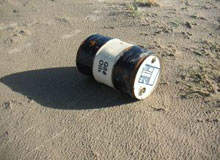
WTI and Brent breached the $60 level in early July 2005 as the tropical storm season in the Caribbean got off to an unusually active start. But the short-term risks do not stop there. Geopolitical concerns and price expectations are also prompting consumers to manage risk for the fourth quarter and beyond. But while citing the upside risks, it is easy to forget that risks cut both ways.
The unfolding statistical picture increasingly reveals that fear of the unknown and the consequent desire to make forward oil purchases are behind oil’s higher price path. The robust forward premium is consistent with higher stocks and a stimulus to add to them. The crude market is characterised by sharp upward surges followed by more protracted but shallower dips: a classic bull market. But as prices move higher and stocks and spare capacity increase, it must not be forgotten that the downside price risks will eventually emerge as well.
Our projections for 2006 show demand growth of 1.75 million barrels per day (mb/d), offset by a slightly higher level of non-OPEC, OPEC NGLs and non-conventional supply growth. The picture for next year remains broadly similar to that of 2005, but with modest increases in capacity growth and stocks. OPEC spare capacity is expected to break through 3.0mb/d in 2006 which, while well below the 5mb/d average between 2000 and 2002, is a significant improvement from the 1.0mb/d evident at the end of 2004.
All forecasts have uncertainties, with the assumed path of economic growth being at the fore of those. But there are other factors to consider. China’s price restrictions on transport fuels and power are making it uneconomic for domestic refiners and utilities to maximise output, thereby inhibiting demand. Any liberalisation of either market has the potential to increase domestic oil demand.
However, so far there is no sign of this happening and anecdotal indications suggest a weak start to apparent Chinese demand in the third quarter. From the supply side, the future output from Yukos remains uncertain, but there is equal potential for other increases in Russia. Elsewhere, a large number of start-ups and expansions are anticipated in the second half of 2005 and throughout 2006.
See Also:
This IEA has always held a more sanguine view over the outlook for the coming months. Improved data for some non-OECD countries has actually reduced the fourth quarter ‘OPEC call’ to 29.0mb/d – below June’s estimated OPEC production of 29.3mb/d. Further, the OECD commercial stock data for April and preliminary numbers for May show that second-quarter stocks are building at 1.8mb/d – double the five-year average.
How well do you really know your competitors?
Access the most comprehensive Company Profiles on the market, powered by GlobalData. Save hours of research. Gain competitive edge.

Thank you!
Your download email will arrive shortly
Not ready to buy yet? Download a free sample
We are confident about the unique quality of our Company Profiles. However, we want you to make the most beneficial decision for your business, so we offer a free sample that you can download by submitting the below form
By GlobalDataReports suggest that demand has been brought forward as US refiners have stocked up on light, sweet crudes ahead of heavy autumn maintenance, to hedge any glitches in planned additions of new desulphurisation capacity. However, this is unlikely to immediately cool the market’s fever.
Current prices suggest that the strategy of offsetting lower spare capacity with stocks has not yet run its course. A strategy that makes perfect sense in this uncertain environment.
DEMAND SUMMARY
Revisions to historical data have resulted in a decline in baseline demand, contributing to a 410,000 barrels per day (kb/d) downward adjustment to the forecast of 2005 demand. Global demand is expected to average 83.88mb/d in 2005. The outlook for both Chinese and US demand growth is weaker. Overall, 2005 demand growth is revised downwards by 200kb/d to 1.58mb/d.
Chinese apparent demand has weakened considerably as the government continues to pursue non-market pricing policies for oil products and electricity. This has discouraged oil product imports and encouraged exports. In May 2005, net product imports declined to 150kb/d, well below the 730kb/d seen in May 2004. A recovery in Chinese demand is expected in the latter half of the year, but on the whole Chinese demand growth for 2005 is revised downwards by 100kb/d to 360b/d (5.5 per cent).
In 2006, global demand is projected to grow by 1.75mb/d (2.1%) to 85.62mb/d. Non-OECD countries are expected to continue to lead global demand growth, increasing by 1.34mb/d (4.0%). OECD demand is projected to grow by 410kb/d (0.8%).
As it stands, the current outlook for 2006 economic growth remains broadly similar to the 2005 outlook. In addition, the effects of the relatively high prices seen in 2005 are projected to carry over into 2006, as price impacts are partially lagged.
In 2006, Chinese apparent demand is projected to grow by 490kb/d (7.2%). Growth may slow somewhat in the latter half of the year as the demand for diesel used in small power generators eases with a reduction in power shortages. OECD North American demand is expected to grow by 330kb/d (1.3%), with US-50 (excludes territories) demand increasing by 260kb/d (1.3%).
Demand growth is projected to remain relatively flat, at 10kb/d (0.1%), in OECD Europe and marginally higher in OECD Pacific (60kb/d or 0.7%).
SUPPLY SUMMARY
Non-OPEC oil supply in 2006 is expected to recover from two disruption-prone years in 2004 and 2005. Production in 2006 should average 52.4mb/d versus 51.0mb/d in 2005. Growth of 0.9mb/d this year accelerates to 1.4mb/d in 2006.
Key assumptions underpinning the forecast for 2006 are a less disruption- prone performance from the mature OECD producing areas plus ongoing strong growth from the FSU, Latin America and Africa.
OPEC NGL, condensate and non-conventional oil supply should reach 5.1mb/d in 2006, from 4.8mb/d in 2005 and 4.3mb/d in 2004. This year’s growth centres on Venezuelan synthetic crude production, but in 2006 the balance shifts towards gas liquids. Iran, UAE, Algeria, Qatar, Saudi Arabia, Libya and Nigeria all see production of NGL and condensate rise by 25kb/d or more.
June 2005 saw world oil supply fall by 155kb/d to an average of 84.6mb/d. OECD production was off by 240kb/d, with seasonal maintenance affecting Norway and Alaska in particular. Non-OECD production gained 125kb/d after increases in Russia, Africa and Asia.
OPEC crude supply fell by 60kb/d from an upward revised May total to reach 29.3mb/d. OPEC other liquids supply was up 15kb/d. In all, world supply stands 1.45mb/d higher than in June 2004, with OPEC crude up by 0.8mb/d, non-OPEC production by 175kb/d and OPEC other liquids supply 0.5mb/d above year-ago levels.
Sluggish growth so far this year in non-OPEC production results from a slow-down in the FSU and the onset of seasonal maintenance in the North Sea and North America. Production in Kazakhstan has been revised down by 55kb/d for 2005. But there are now higher expectations for 2005 output for the USA, Mexico, Brazil, Malaysia and Vietnam.
Second-quarter growth accelerated to 470kb/d, having slowed in the previous two quarters. Further acceleration is expected henceforth in 2005, with ongoing recovery in the Gulf of Mexico and Russia and with new supply from Azerbaijan, China, Sudan, Angola and Trinidad. Total supply in 2005 averages 51.0mb/d versus 50.1mb/d for 2004.
OPEC crude supply in June 2005 averaged 29.3mb/d, some 60kb/d less than upwardly revised May levels. Lower liftings from a number of other Arab Gulf producers counteracted higher supplies from Iraq and Nigeria. Iran, Saudi Arabia, Kuwait and the UAE, each trimmed supply by 35-60kb/d compared with May levels, with the latter two affected by oil field maintenance.
In Iraq, the resumption of export liftings from Ceyhan for the first time since December resulted in a 40kb/d rise in net production to 1.84mb/d. OPEC-10 (excluding Iraq) produced 27.4mb/d in June, down 145kb/d from May, and close to the prevailing 27.5mb/d target production level. The target was raised to 28.0mb/d at OPEC’s 15 June Vienna meeting.
The ‘call on OPEC crude and stock change’ now averages 28.1mb/d for 2005, a 400kb/d downward revision compared with last month. This follows the incorporation of revised historical demand data.
From a second quarter low of 26.6mb/d, the call rises to 29mb/d by fourth-quarter 2005. Healthy growth in non-OPEC oil and OPEC gas liquids supply in 2006 should cover expected 2.1% global demand growth, holding the call unchanged at 28.1mb/d next year.
THE SUPPLY SIDE PRICE RESPONSE
Upstream oil and gas activity shows signs of a marked uptick, but the impact on supplies of oil and gas liquids will not be immediate. Notwithstanding, new projects currently under development should generate incremental non-OPEC oil of between 1mb/d and 1.5mb/d each year through 2009. Many of those investments, with lead times of anywhere between three to seven years, were set in train well before the recent surge in prices.
The upstream industry therefore seems to have been consistently investing to meet 1–2% annual global demand growth. The market was thrown out of balance in 2004 because world demand rose by nearer to 3.5%. Anecdotal evidence suggests that sustained high prices may be, in some cases, pulling forward new field start-up dates and could be encouraging operators to sustain mature fields in production beyond originally planned closure dates.
Record rates in the upstream services sector should, in time, help alleviate tightness in upstream capacity. The oil sector has traditionally been a highly cyclical business and there is little reason to suspect that this has changed. Recent day rates for drilling
equipment have broken through a hitherto unheard of $300,000 per day. This reflects a shortage of rigs, notably those capable of operating in ultra-deepwater areas over 2000m.
More newbuild capacity should follow, albeit with a time lag of two to three years. The recent surge in drilling activity is encouraging. Some will be for pre-existing oil development projects, and some for natural gas. Whether a genuine resurgence in oil exploration is underway to replace reserves and sustain supply growth in the longer term is less easy to say.
Upstream spending surveys covering 2005 from Lehman Brothers and Citigroup also show a sharp increase versus equivalent studies undertaken at the end of 2004. (The surveys cover several hundred upstream operators, but inclusion of NOCs is limited.) Capital expenditure on exploration and production is now seen rising by around 13% compared to an early-year expectation of between 4–6%.
Further upside is possible, particularly if high oil and gas prices persist through 2005. The higher rate of growth is widely spread geographically, although the reports caution that higher service company and drilling rig costs will absorb some of the extra dollars and may not be directly translated into extra barrels of supply. Smaller companies are boosting spending fastest and are now using sharply higher price assumptions. Spending growth by larger, integrated operators seems slower to respond.
Surveyed companies cited shortages in qualified senior personnel and a lack of upstream prospects as reasons why 2005 spending was not higher still. An imminent shortfall in qualified upstream staff has for some time been identified as a potential constraint for development projects in the medium term and seems to be most acute in North America and the North Sea.
Any genuine shortage of upstream development prospects can best be addressed by increased access to reserves under terms satisfying the financial and strategic needs of international companies and the development goals of host country governments.




